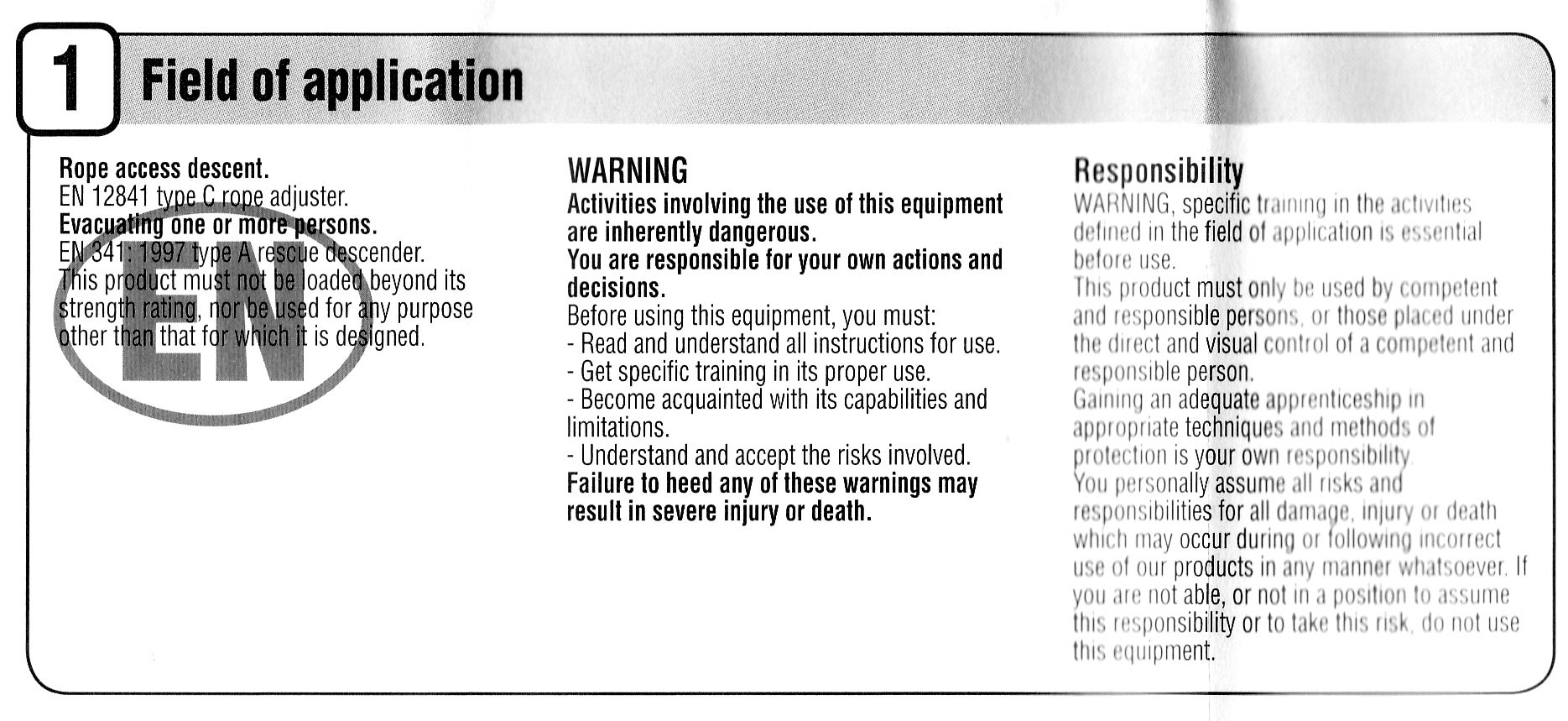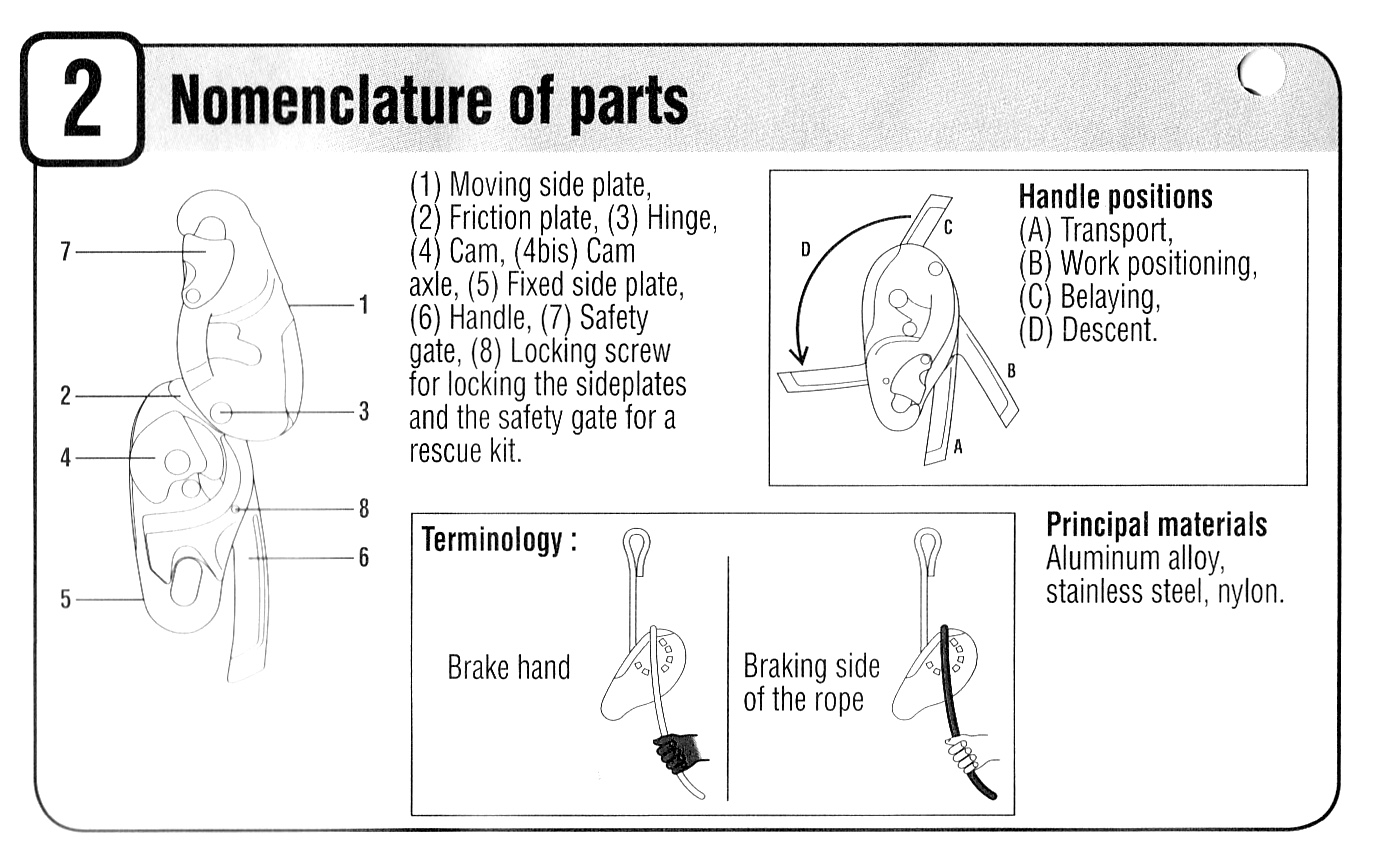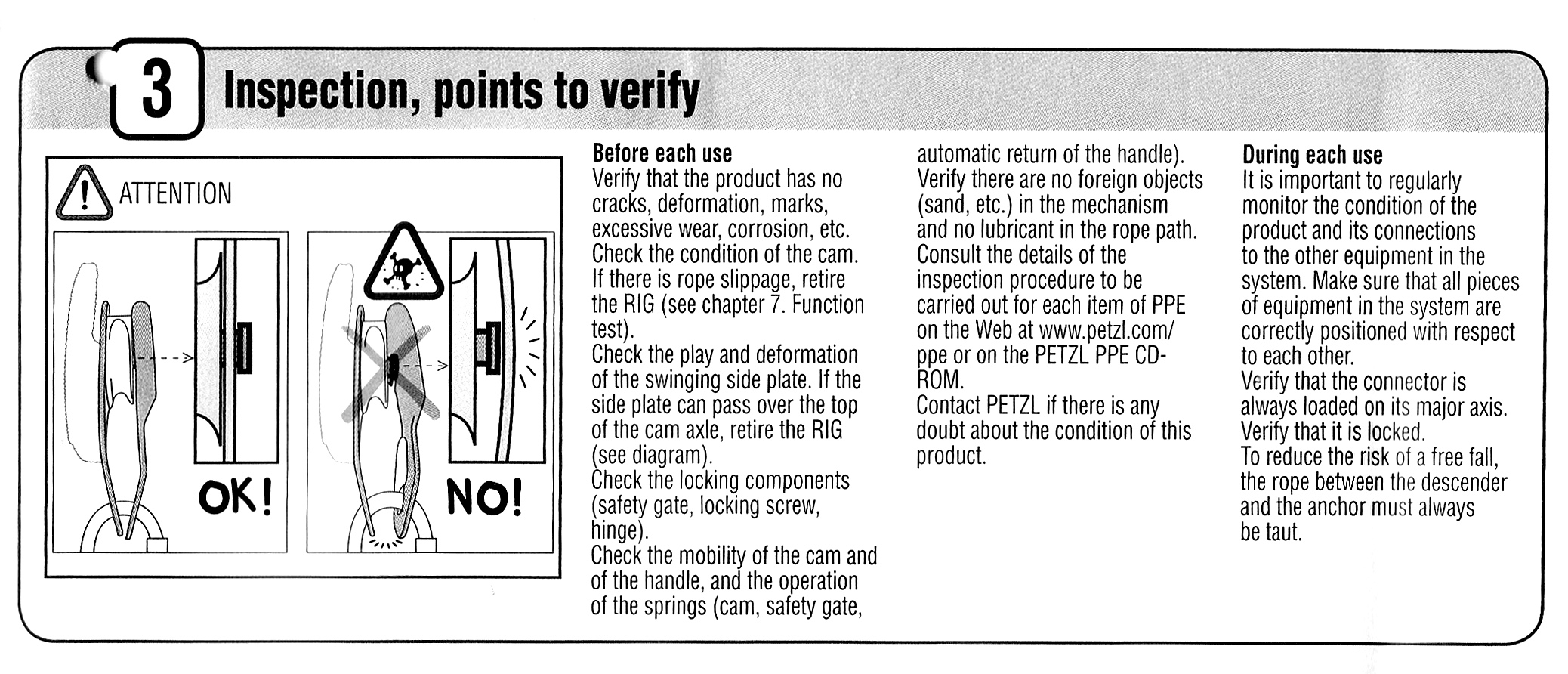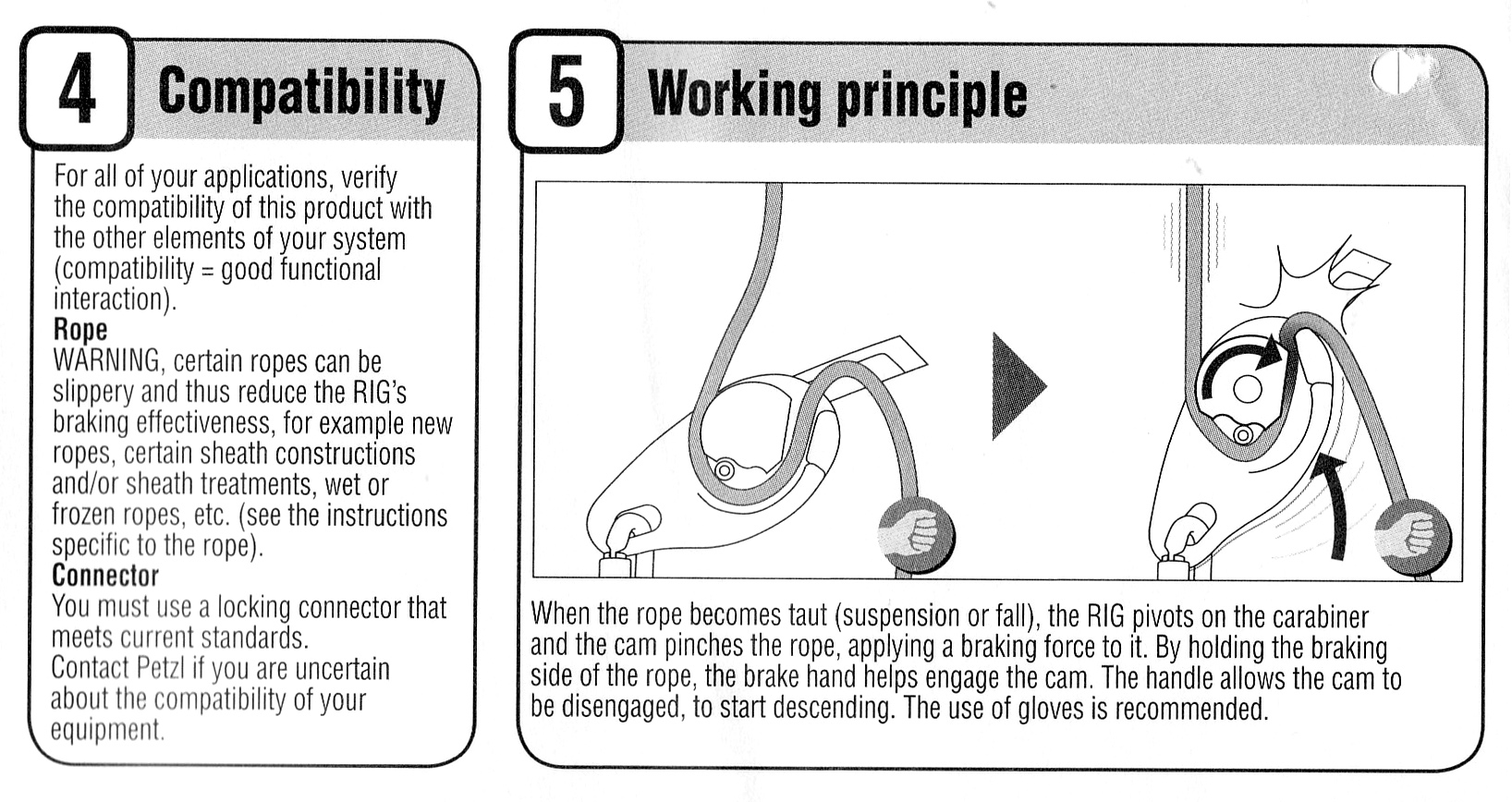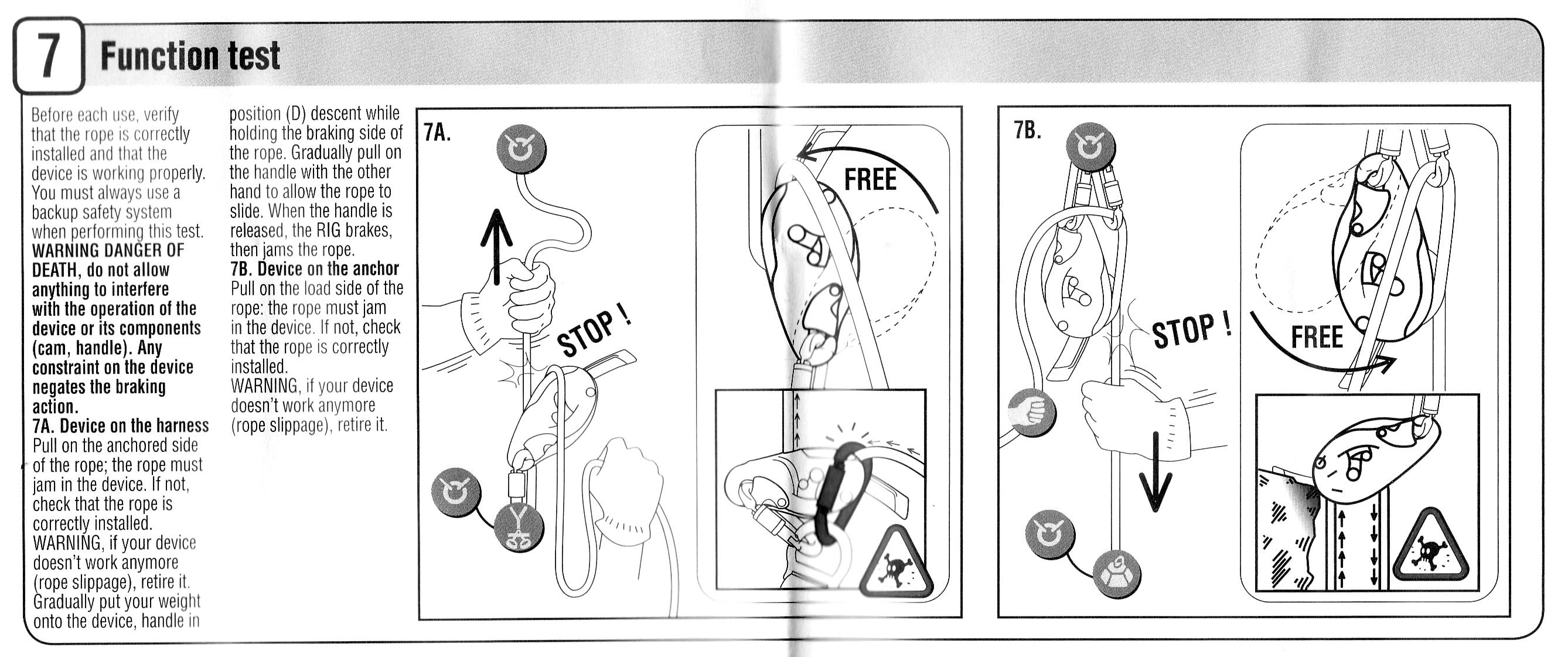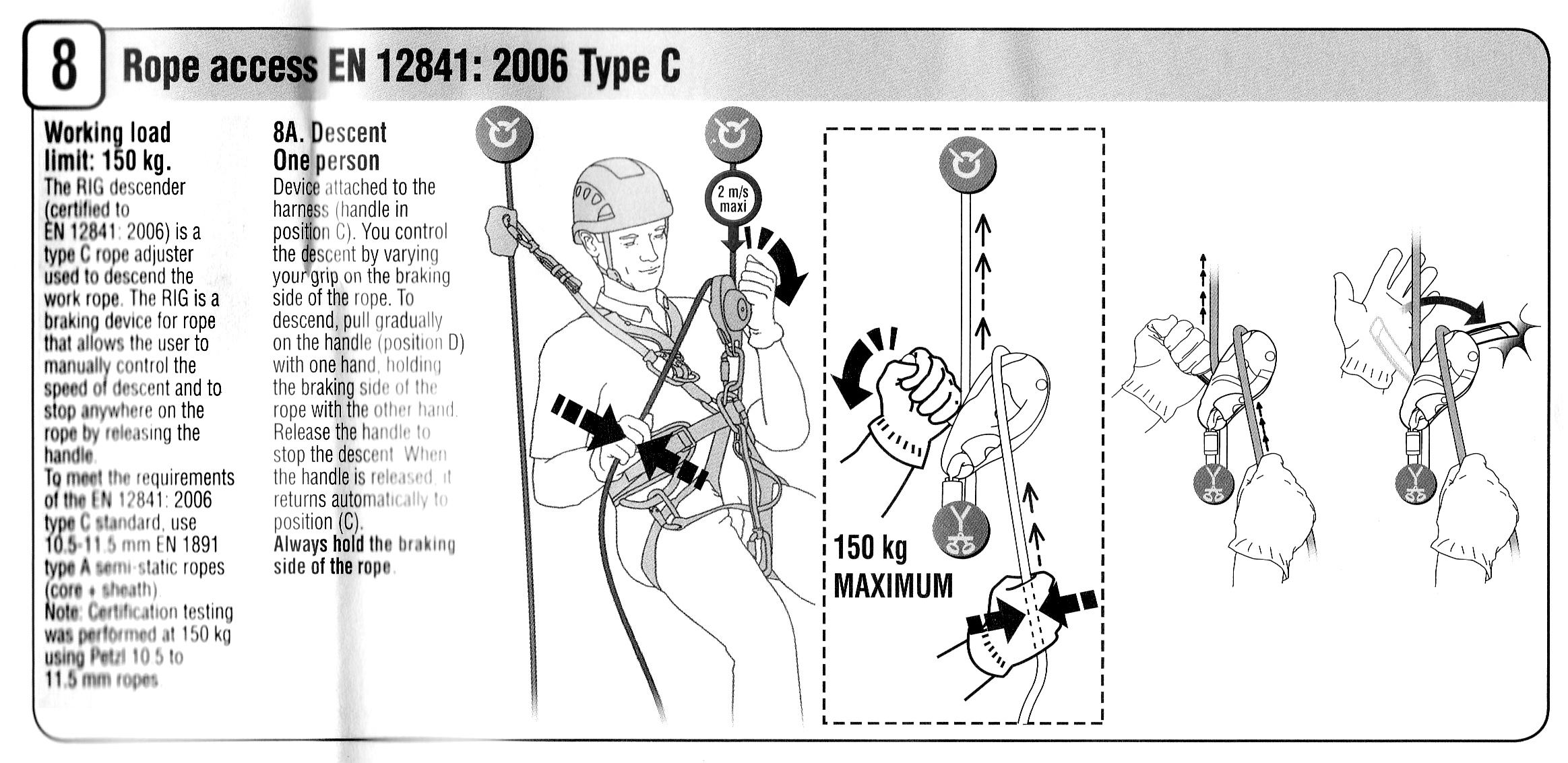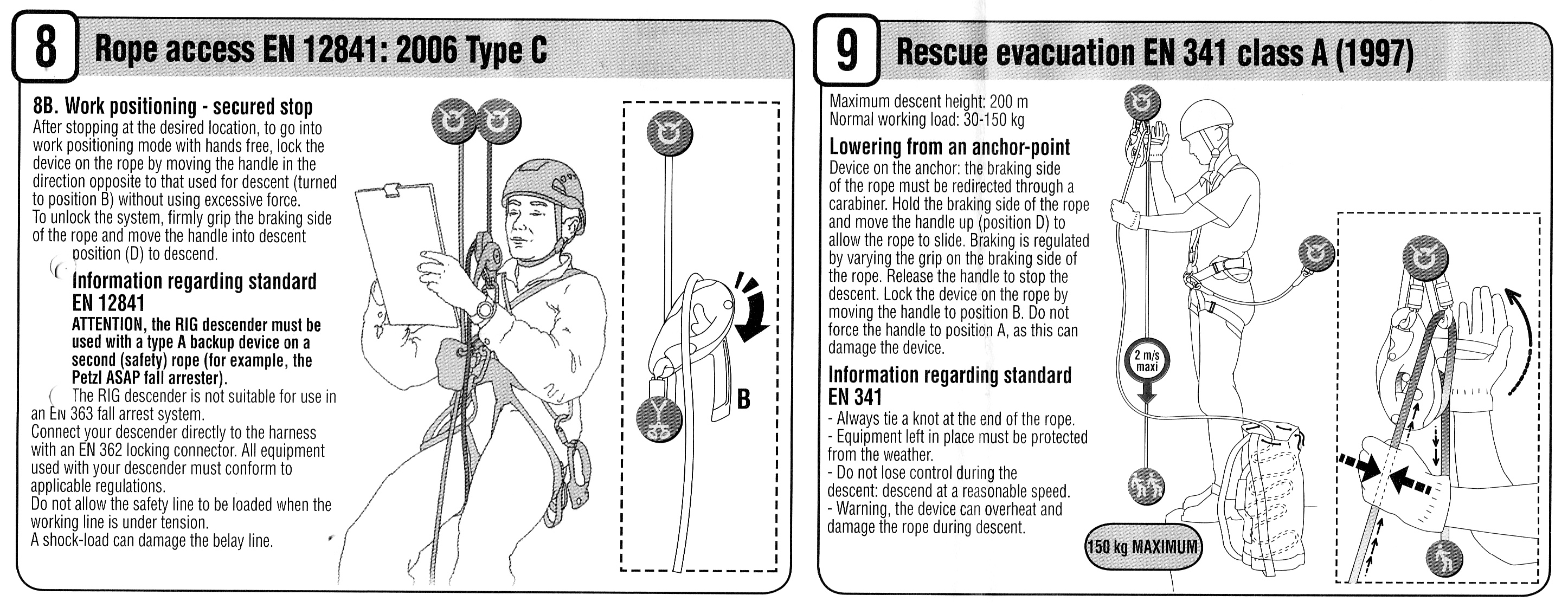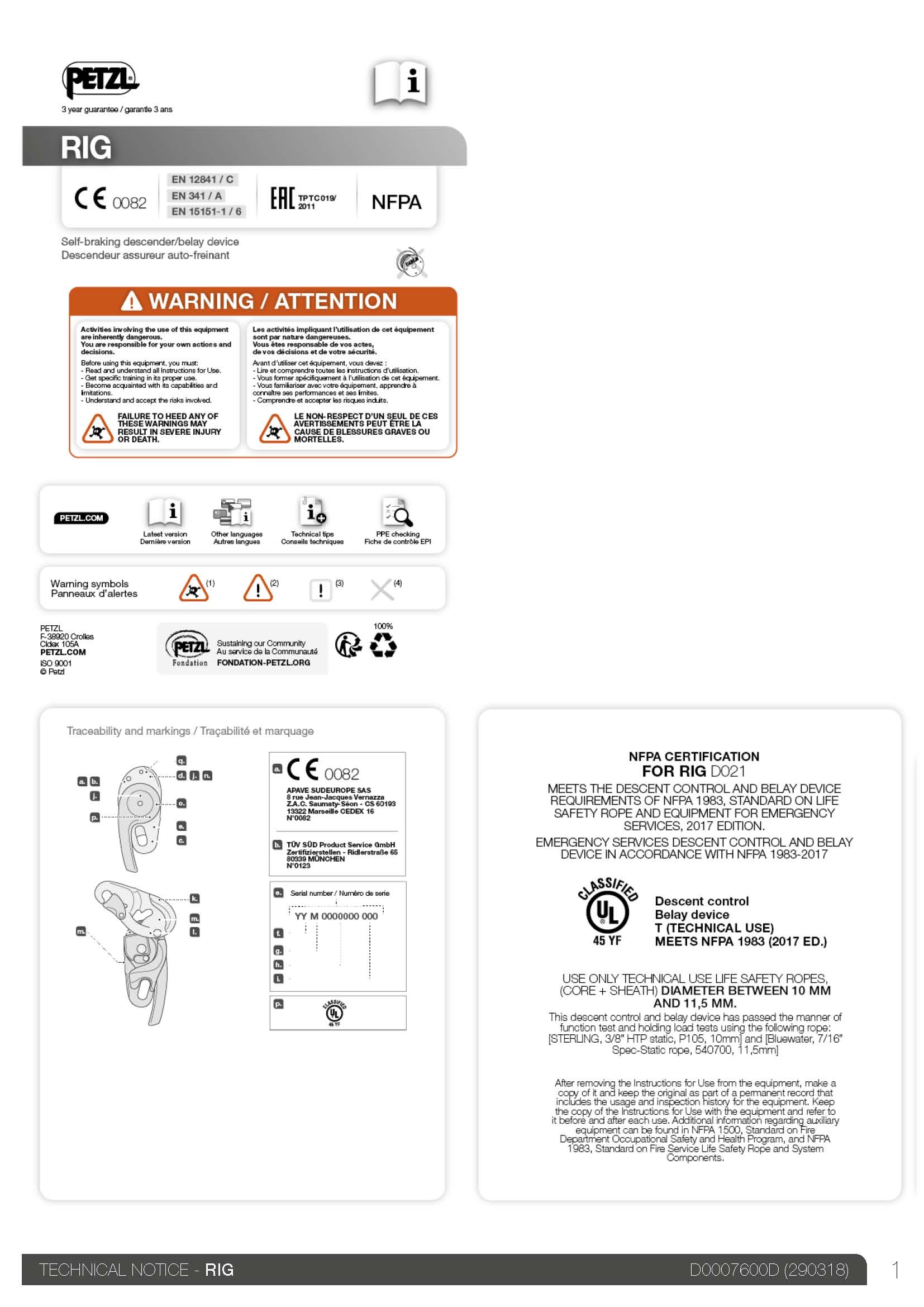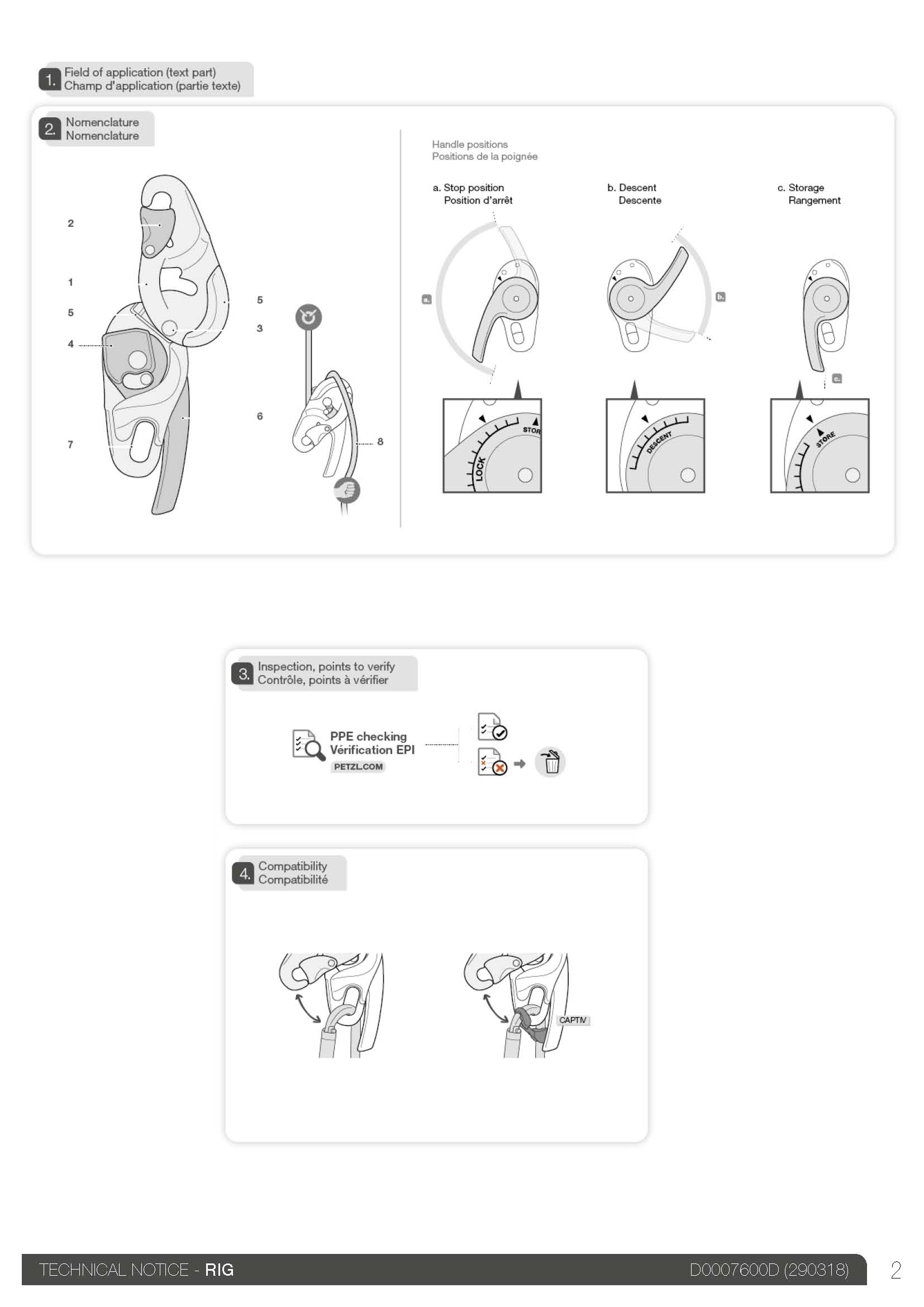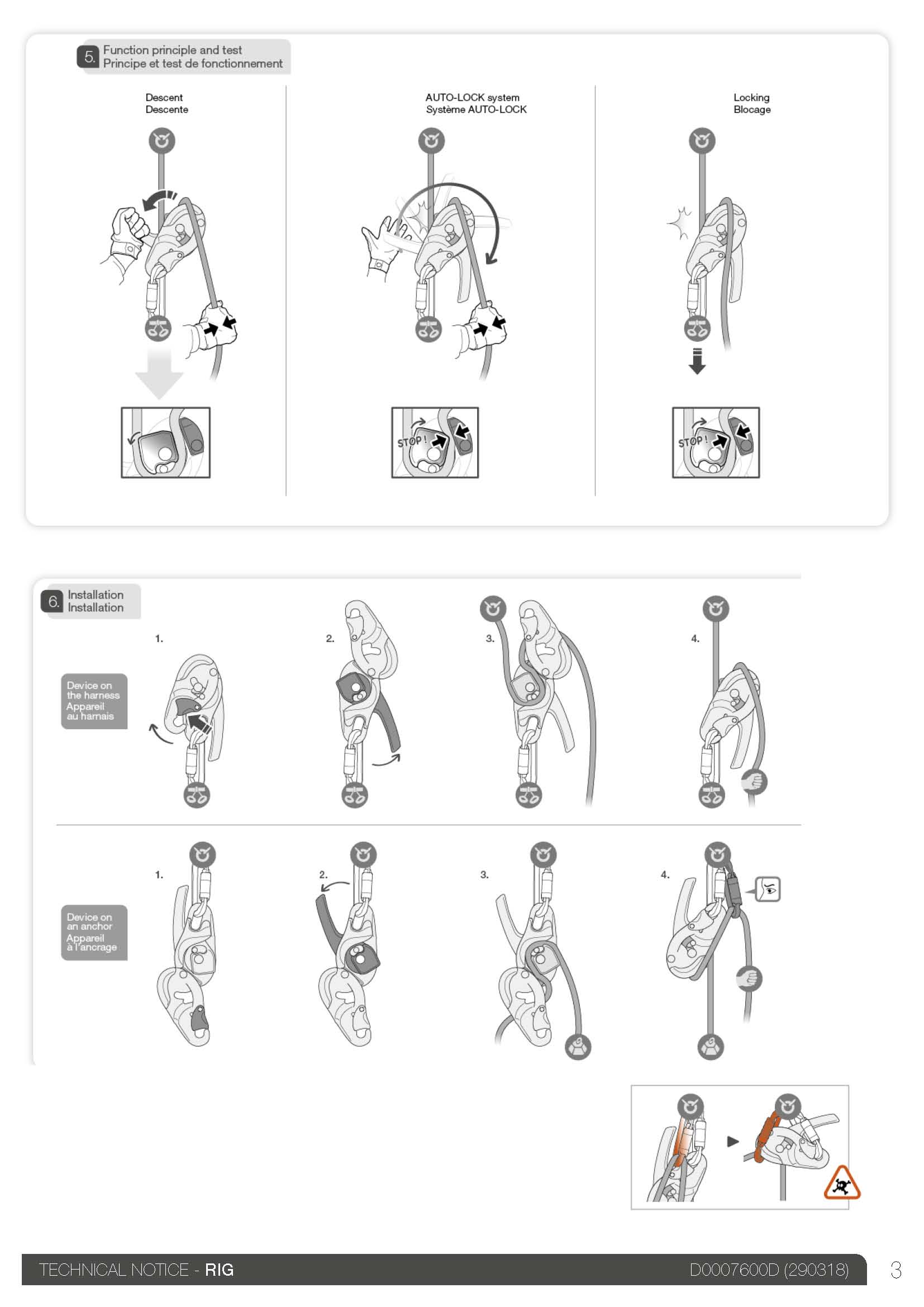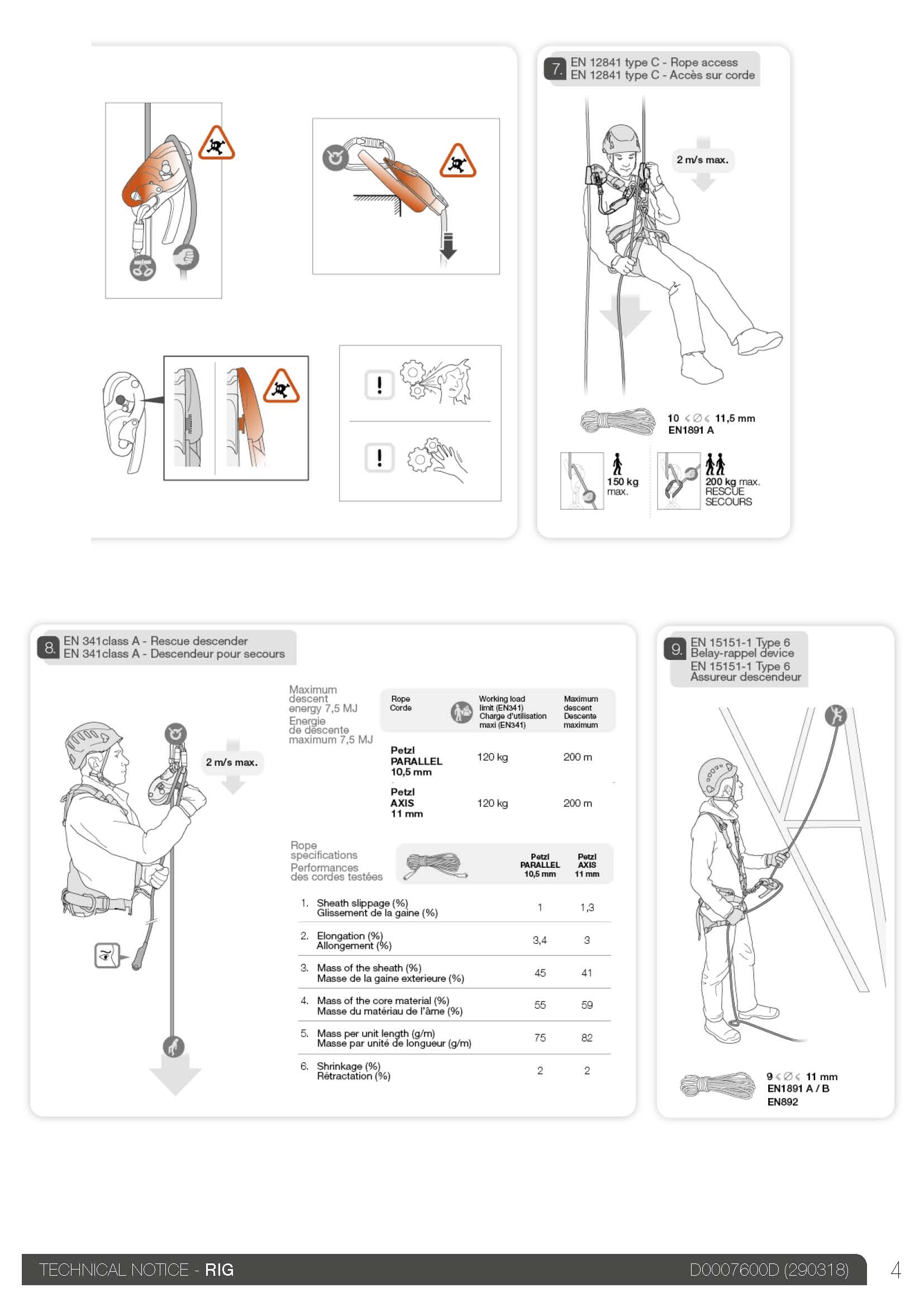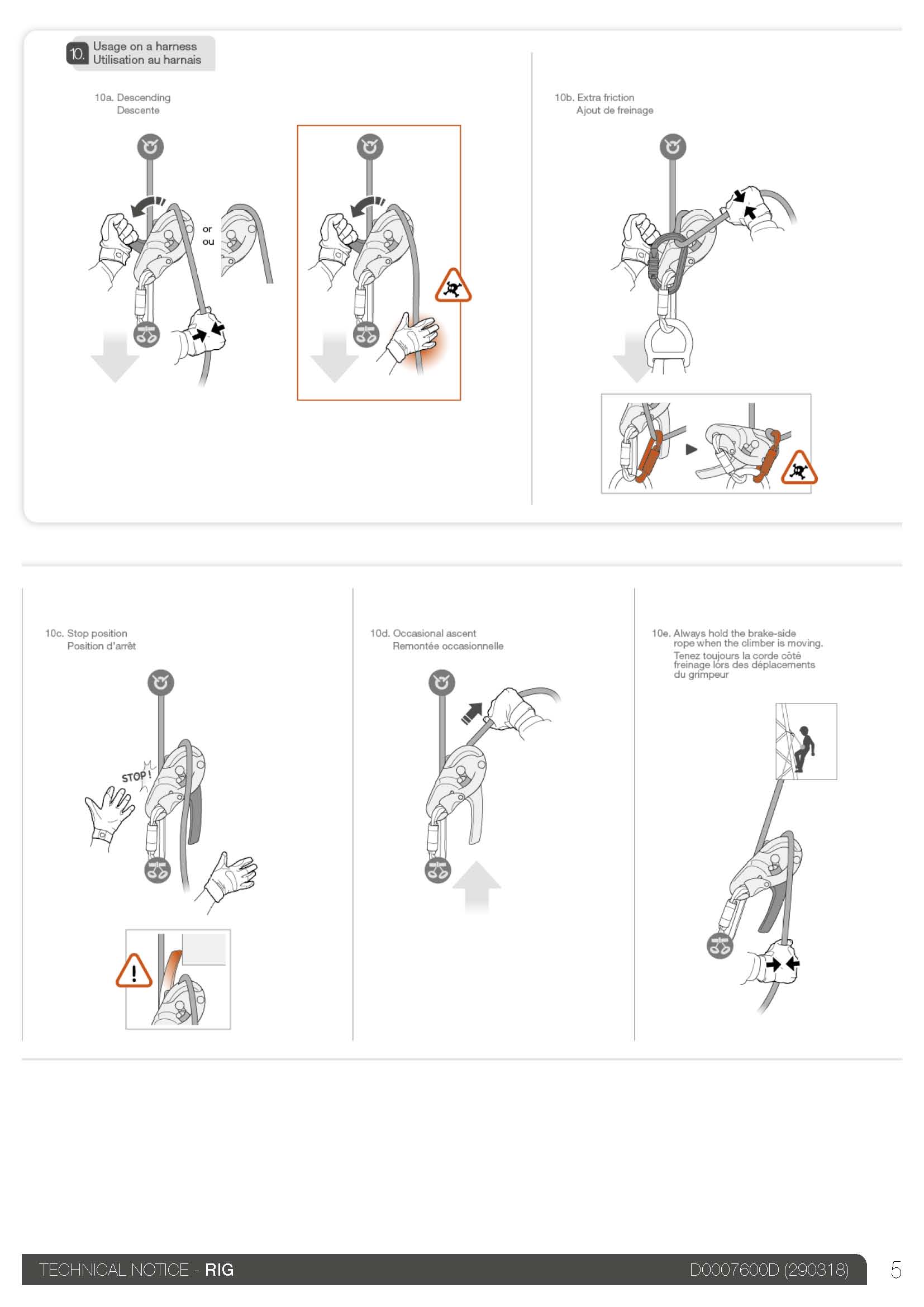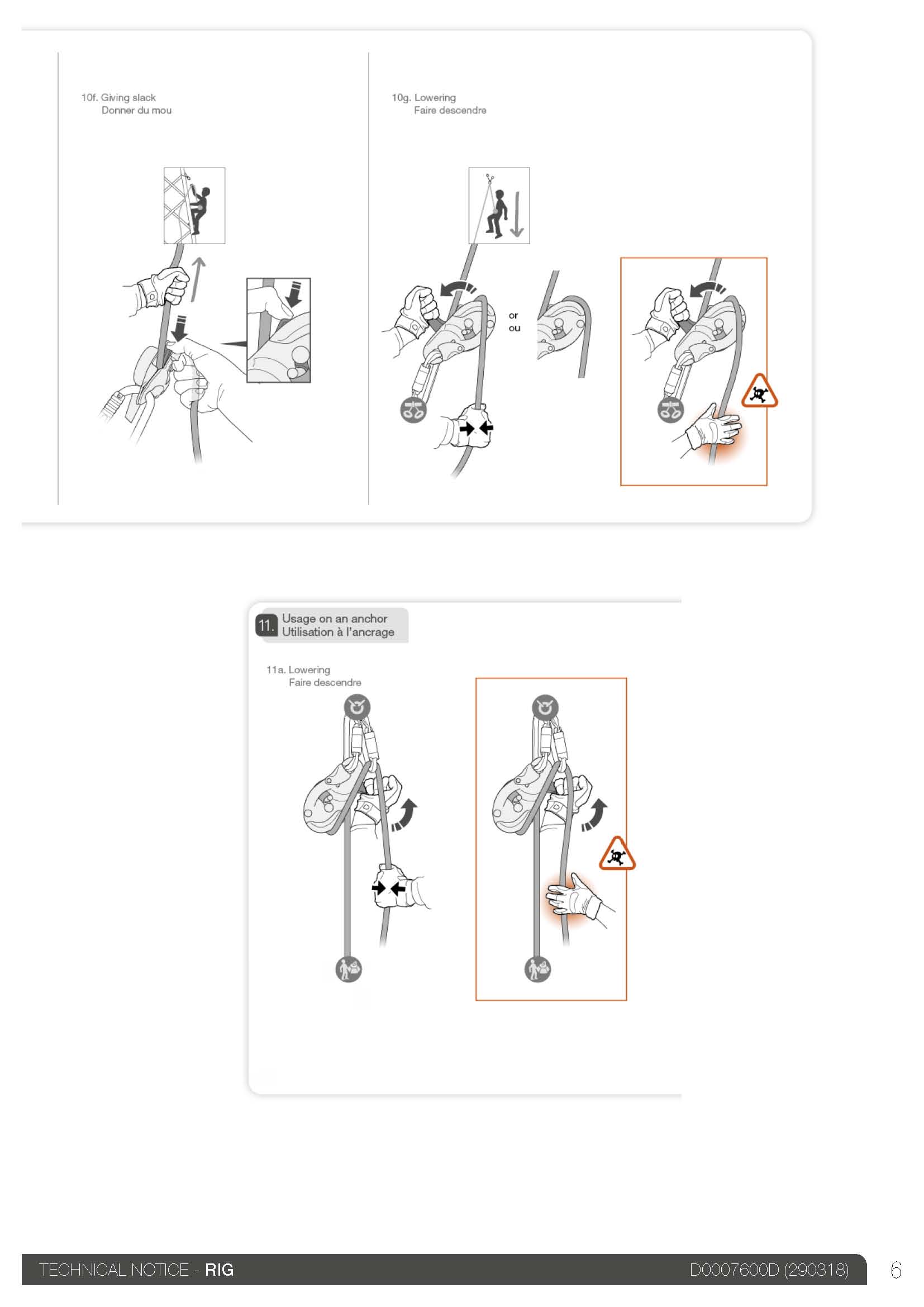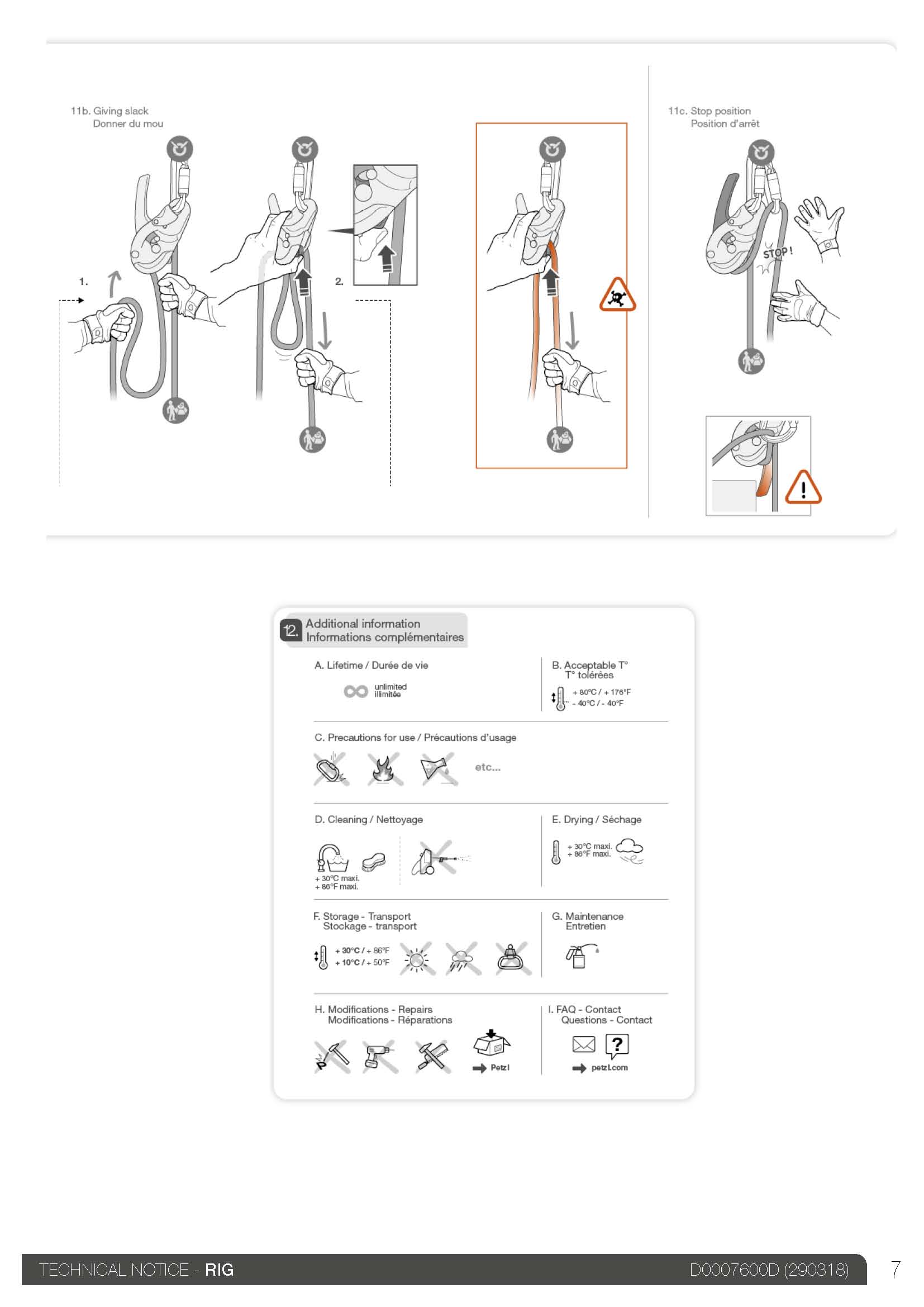[ Top
| Rig v. B
| Return to Double-Stop Bobbins
]
Rig,Version A
(Model D21)
(#1247, 2477†)
Technical Details
 I acquired my Petzl Rig, Version A from On Rope 1 in 2010.
I acquired my Petzl Rig, Version A from On Rope 1 in 2010.
This Petzl Rig is 177 mm. tall, 67 mm. wide, 58 mm. thick, and weighs 379 g.
The Rig is basically a smaller, simplified variation on the Small I’D, Version A. The following description is based on the one for the Small I’D, Version A, with the unchanged text shown in gray.
The Rig is shaped like an inverted pear (or perhaps an avocado)
with a handle on the back. There are two stamped aluminum plates
with a variety of other parts attached. The rear plate is
black anodized 3 mm. aluminum, and serves as the main frame.
The lower portion of this plate is bent forward, and a 14.9 by 26.0
mm slot serves as the clip-in eye.
The rear plate has several components mounted on it. Starting
from the top, there is a 16.5 mm. thick rounded triangular
anvil mounted at the upper right. Below this to the left is a 50 mm. diameter bollard. Most of the bollard’s circumference
is grooved to guide the rope. The upper left side of the main
bollard is flattened so that the rope can run between it and the
anvil. The lower portion is cut away to clear a small post. The
main bollard can be rotated about 30 degrees using the handle.
Rotating the bollard clockwise squeezes the rope against the anvil,
stopping the descent.
The post is slightly grooved, being 10 mm. in diameter
at the ends and only 8.3 mm. in the center. Although the rope
runs over the post, its primary function is to limit the rotation
of the main bollard.
The Rig does not have the "anti-error catch" present on the I’D.
Finally, a plastic guide runs down the right side of the Rig. Its function is cosmetic. There is a countersunk hole in the rear plate, beside the clip-in eye, that aligns with a smaller diameter hole in the plastic guide. This is obviously intended for a self-tapping screw to secure the guide, but my Rig came without such a screw.
The front plate is mounted and pivots on a small rivet attached
to the lower right corner of the anvil. The fit is quite loose.
This plate is stamped into a more complex form than the rear plate.
The left side is bent back on itself to create a rounded edge
for the rope to run against. The left side is raised so that it
clears a slot that engages a rim on the main bollard pivot. A
notch in the slot rests against the small bollard. A dimple in
the top hits the anvil; unlike similar dimples on Petzl ascenders,
this one actually makes contact. A J-notch on the lower portion
of the front plate lines up with the oval hole on the rear plate.
The notch admits the seat maillon. Unlike the Small I’D, Version A, the notch carries weight. A plastic safety catch keeps the front plate from accidentally opening. The notch is not deep enough to fully secure the seat maillon without the catch engaged.
The normal rigging path is to bring the rope down the left side, under
the main bollard and smaller bollard, and up between the main
bollard and the anvil, then out the top and over the anvil. The
rope path is much like the classic bobbin rope path.
The main bollard is turned by the handle on the rear of the
device. The handle pivots on an extension of the front post, and
held on by a 40 mm. diameter aluminum fender washer. A clutch
assembly controls the motion. The clutch is not visible without
destroying the device. A light spring tends to turn the bollard
counter-clockwise, but when used on rope the rope friction completely
overpowers the spring. As a result, the behavior of the device
on rope is quite different than one would expect after examining
the device in the hand. The device works as follows: When viewed
from the front, the normal descending position is with the handle
at 10 o’clock. The rope friction is turning the bollard so that
the rope is squeezed against the anvil Pulling down (counter clockwise)
on the handle turns the main bollard counterclockwise, which releases
the rope. The Rig does not have the over-travel braking function that the I’D has. The handle on the Rig is spring-loaded, so it returns to the 1 o’clock ("belay") position when released.
Turning the handle from 1 o’clock to 4 o’clock puts the rig into the "lock" position. The next step is the "storage" position at 6 o’clock.
The front plate is stamped with the Petzl logo, "Rig,"
"MADE IN FRANCE," "PATENTED," a book-with-an-"i" icon, and an illustration
of the device in use. The outside of the rear plate is marked with an indexing arrow pointing to the handle markings, "CE0197," "EN12841:2006/c - 150 kg," "EN341:1997/A - 200m - 150 kg," "Rope * Ø 10.5 - 11.5 mm, "09329FT8079" and a digital scanner ID pattern. and "MAX 150 Kg /200m." The inside has symbols that
I believe are intended to show how the device is rigged. One symbol
looks like a shepherd’s crook, the other shows a hand holding
a rope. The main bollard has Petzl logo
cast into it. The handle has various index markings labeled "DESCENT, "BELAY," "LOCK," and "STORE." The retaining washer is marked with "MEETS NFPA 1983 (06 Ed.)", "MBS 14kN", "L," the UL "Classified" logo, and "45YF."
The Rig is smaller than the ID and lacks some of the annoying features provided on the ID, such as the over-travel brake and the anti-error catch. It still has hidden parts that make me hesitant to take it into muddy environments, but the Rig wasn't really designed as a caving descender, so enough said.
[ Top
| Rig v. A
| Return to Double-Stop Bobbins
]
Rig,Version B
(Model D21)
(#2522)
Technical Details
I acquired my Petzl Rig, Version B from On Rope 1 at the 2019 NSS Convention.
This version is 179 mm. tall, 70 mm. wide, 54 mm. thick, and weighs 402 g. The main differences between version B and A is that version B replaced the turned rope-running surface at the top left with a stainless steel casting.
The front plate is stamped with a hand holding a line representing the rope, a Reading-Is-Dangerous icon, "RIG," and another line representing the rope to the anchor.
The outside of the rear plate is printed with "CE," "0082," "Petzl," "F-38920 Crolles," "Cidex 104A," "EN12841: 2006/C • 10-11,5 mm," a man icon followed by ":150kg•10-11.5 mm" and then two man icons followed by ":200kg," "EN341 : 2006/C-200T>-40°C," "Petzl PARALLEL 10,5-30/120kg," "Petzl AXIS 11mm-30/120kg," "EN15151-1-2012/6," "Ø9-11mm," a triangle pointing toward the handle, "EAC," "TP/TC 019/2011," "Pat.Pend.,", "19B0177784101," and a scanner code.
The rear of the handle has molded range indicators opposite the triangle showing the following handle ranges: "LOCK," "STORE", and "DESCENT."
The plate at the rear center of the handle is marked with "MEETS NFPA 1003 (2017 Ed.)," "Descent Control, Belay Device(T), "Ø 10-11.5mm," the Underwriters Laboratory "classified" logo, and "45YF." The inside has symbols that
I believe are intended to show how the device is rigged. One symbol
looks like a shepherd’s crook, the other shows a hand holding
a rope. The main bollard has the Petzl Logo cast into it. The plastic safety catch has the Petzl Logo molded into it.
The stainless steel running surface should wear much better than the older design, which was merely a bend in the aluminum shell.


